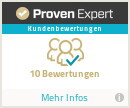Taking Charge of Your Career: Self-Assessing Your UX Leadership Skills
4. April 2023 2023-04-04 13:00Taking Charge of Your Career: Self-Assessing Your UX Leadership Skills

Taking Charge of Your Career: Self-Assessing Your UX Leadership Skills
As a UX leader, it’s essential to regularly assess your skills to ensure that you’re effectively leading your team and staying competitive in the industry. The world of UX design is constantly evolving, and as a result, UX leadership skills are becoming increasingly important. This article explores the importance of self-assessing your skills as a UX leader. It offers guidance on identifying your strengths and weaknesses, creating a personalised skill matrix, assembling a development plan, continuing your education and growth, and seeking mentorship and support.
First, let’s dive deeper into what UX leadership skills are and why they’re essential for success in the industry. As a UX leader, you guide your team towards creating user-centred design solutions that meet business objectives. This requires a unique set of skills that goes beyond just design knowledge. UX leadership skills encompass a range of abilities, including communication, collaboration, strategic thinking, and project management. In addition to these soft skills, UX leaders must profoundly understand user research, information architecture, interaction design, and other UX-specific areas.
Now that we better understand UX leadership skills let’s explore the importance of self-assessing your skills as a UX leader.
Identifying Your Strengths and Weaknesses
Assessing your strengths and weaknesses is essential to self-improvement as a UX leader. Knowing your strengths allows you to take on tasks that align with your skillset, play to your strengths, and build on them to become an even more effective leader. On the other hand, understanding your weaknesses helps you identify areas for improvement and develop a plan to overcome them.
To start, reflect on your past experiences as a UX leader. What projects have you worked on? What challenges have you faced? What accomplishments are you most proud of? This exercise can help you identify areas where you excel and may need improvement.
Another way to identify your strengths and weaknesses is to seek colleague feedback. Ask for constructive criticism on your communication, collaboration, and project management skills. Be open to hearing positive and negative feedback, and use it to inform your self-assessment process.
Additionally, observe other UX leaders and their leadership styles. What do you like or dislike about their approach? How do they handle challenges and conflicts? What can you learn from their successes and failures? This exercise can help you gain perspective on your leadership style and identify areas for improvement.
Another approach is to compare your UX leadership skills to industry standards. Look for resources such as industry frameworks, job descriptions, and competency models to understand the skills and knowledge expected of a UX leader in your industry.
Once you clearly understand your strengths and weaknesses, you can start to create a plan for improvement. The following section will discuss creating a personalised skill matrix to guide your development as a UX leader.
Creating a Personalised Skill Matrix
A skill matrix is a tool that can help you identify the UX leadership skills you need to develop to become a more effective UX leader. It’s essentially a grid that lists the competencies required for your role and assesses your current level of proficiency in each one.
Research the competencies required for a UX leadership role to create a personalised skill matrix. These may include skills such as:
- Leadership and management skills: This includes skills such as team building, coaching and mentoring, conflict resolution, decision-making, and strategic thinking.
- Design thinking: The ability to apply a design thinking approach to problem-solving and decision-making.
- User experience research and design: The ability to conduct user research, analyse data, and design user-centred experiences.
- Technical skills: A strong understanding of technical aspects of UX, such as accessibility, usability, and information architecture.
- Communication skills: Communicating effectively with stakeholders, clients, and team members.
- Project management skills: Managing projects effectively, including defining scope, setting timelines, and budgeting.
- Business acumen: A solid understanding of the business goals and objectives that drive UX decisions.
- Emotional intelligence: Empathising with others, building strong relationships, and managing emotions effectively.
- Continuous learning: A willingness to learn and stay up-to-date with industry trends and best practices.
Once you have identified the relevant competencies for your role, assess your proficiency using a rating scale such as novice, intermediate, or expert. Be honest with yourself and avoid overestimating your abilities. A realistic view of your UX leadership skills is vital to determine where to improve.
Identifying your strengths and weaknesses can be a humbling experience, but it’s necessary to grow as a UX leader. Don’t be discouraged if you have deficiencies in certain areas. Everyone has room for improvement; recognising your growth opportunities is the first step in the development process.
Use your skill matrix to prioritise the skills you need to develop. Focus on one or two competencies at a time, and create a plan to improve your skills in these areas. This may include attending workshops or conferences, seeking mentorship or coaching, or practising new skills on the job.
It’s important to note that a skill matrix is not a one-time exercise. You should regularly revisit and update your matrix as you develop new skills and take on new challenges. As your career progresses, the competencies required for your role may also change, so staying up-to-date and adapting your skill matrix is crucial.
Creating a personalised skill matrix can be a powerful tool for self-assessment and professional growth. It can help you identify the areas where you need to improve and provide a roadmap for developing your UX leadership skills. Remember to be honest with yourself, stay committed to your development goals, and celebrate your successes along the way.
Creating a Development Plan
Once you have identified your strengths and weaknesses as a UX leader, the next step is to create a development plan to help you address your weaknesses and build on your strengths.
- Identify your goals: The first step in creating a development plan is to identify your goals. What do you want to achieve as a UX leader? Do you want to improve your communication skills? Do you like to learn more about design thinking? Do you want to become a better team leader? Identify the areas where you want to improve and set specific goals.
- Identify resources: Once you have identified your goals, the next step is to identify the resources you need to achieve them. This might include books, courses, workshops, conferences, or coaching. Identify the resources that will be most helpful for you and make a plan to access them.
- Set a timeline: Set a timeframe for achieving your goals. Identify milestones you want to accomplish along the way and set deadlines for each. This will help you stay on track and ensure that you progress towards your goals.
- Track your progress: Once you have created your development plan, tracking your progress is essential. This will help you stay motivated and ensure that you progress towards your goals. Set up a system for tracking your progress, whether it’s a spreadsheet, a journal, or an app. This will allow you to see how far you’ve come and what you still need to do to achieve your goals.
- Adjust your plan as needed: As you work through your development plan, you may find that some goals are more accessible to achieve than others or that some resources are more helpful. Be willing to adjust your plan as needed to ensure that you are making progress towards your goals.
Remember, creating a development plan is not a one-time activity. As you grow and develop as a UX leader, you must continually reassess your strengths and weaknesses and adjust your development plan accordingly. By taking a structured and intentional approach to your development as a UX leader, you will be able to achieve your goals and continue to grow and evolve in your role.
Continuing Education and Growth
It’s crucial to stay up-to-date with the industry’s latest trends and best practices. The world of user experience is constantly evolving, and it’s essential to continuously learn and grow in your role. Here are some tips on how to continue your education and foster growth:
- Attend industry events: Attending conferences, workshops, and meetups is a great way to stay current with the latest trends and learn from other professionals. You can also network with other UX leaders and gain insights from their experiences.
- Read industry publications: Reading books, blogs, and articles written by UX experts can help you stay informed about new design methodologies, user research techniques, and other developments in the industry.
- Take online courses: Numerous online courses and training programs are available to help you develop your skills as a UX leader. Platforms like Udemy, Coursera, and LinkedIn Learning offer a variety of courses on UX design, user research, and leadership.
- Learn from other industries: It can be beneficial to look outside the UX industry and learn from different fields. For example, studying leadership and management techniques in other sectors can provide fresh insights and help you approach problems differently.
- Seek feedback: Asking for feedback from your team, peers, and superiors can help you identify improvement areas and set professional development goals. Be open to constructive criticism and use it to change your leadership style positively.
By continuously learning and growing in your role, you can become a more effective UX leader and drive success for your team and organisation.
Seeking Mentorship and Support
As a UX leader, seeking mentorship and support is valuable in your professional development journey. Here are some tips on how to find a mentor and benefit from their guidance:
- Define your goals: Before seeking mentorship, define your career goals and the areas where you want to grow. This will help you identify potential mentors who have expertise in these areas.
- Network: Attend industry events and connect with other UX professionals. This can help you build relationships with potential mentors who can offer guidance and support.
- Look within your organisation: Consider seeking mentorship from someone within your organisation who has more experience in UX leadership. This can be a great way to gain insights into the company culture and navigate challenges within your workplace.
- Seek online mentorship: Many online mentorship programs are available, where you can connect with experienced UX leaders who can offer guidance and support remotely.
- Be open to feedback: When seeking mentorship, be open to feedback and be willing to learn from your mentor’s experiences. This can help you develop new skills and approaches to problem-solving.
- Pay it forward: Once you have gained valuable insights and experience from your mentor, consider mentoring others in your industry. This can help you continue to learn and grow while giving back to the UX community.
In conclusion, seeking mentorship and support can help you grow as a UX leader and develop new skills. By defining your goals, networking, and being open to feedback, you can find a mentor who can offer guidance and support on your professional development journey.
Conclusion
In conclusion, self-assessing your UX leadership skills is crucial to achieving your professional goals and improving your overall effectiveness as a leader. By reviewing your past projects, benchmarking to industry standards, visualising your skills and competencies, seeking feedback, creating a personalised skill matrix, creating a development plan, continuing education and growth, and seeking mentorship and support, you can continually improve your skills and become a more effective UX leader.
However, it can be challenging to navigate this process on your own. That’s where working with a coach can be helpful. As a UX and leadership coach, I can help you navigate the process of assessing your UX leadership skills and creating a development plan. I can also help you identify growth opportunities and support you in achieving your professional goals.
If you’re interested in working with me, I offer a free strategy call to discuss your goals and see if working together would be a good fit. 👉 Don’t hesitate to reach out and book your free strategy call today.
Investing in your professional development as a UX leader is an investment in yourself and your career. By taking the steps outlined in this article and seeking the support of a coach, you can become a more effective and successful leader in the field of UX.
Further Reading
Gastaldello, G. (2022). Effective UX leadership: 5 qualities that will make you a great UX leader. Maze. https://maze.co/collections/ux-ui-design/ux-leadership/
Kovács, A. (2019). What Leadership Qualities Does it Take to be a Good Leader? UX Studio. https://uxstudioteam.com/ux-blog/leadership-qualities/
Chambers, L. (2017). The Essential Qualities of a UX Leader. UX Mastery. https://uxmastery.com/essential-qualities-ux-leaders/







